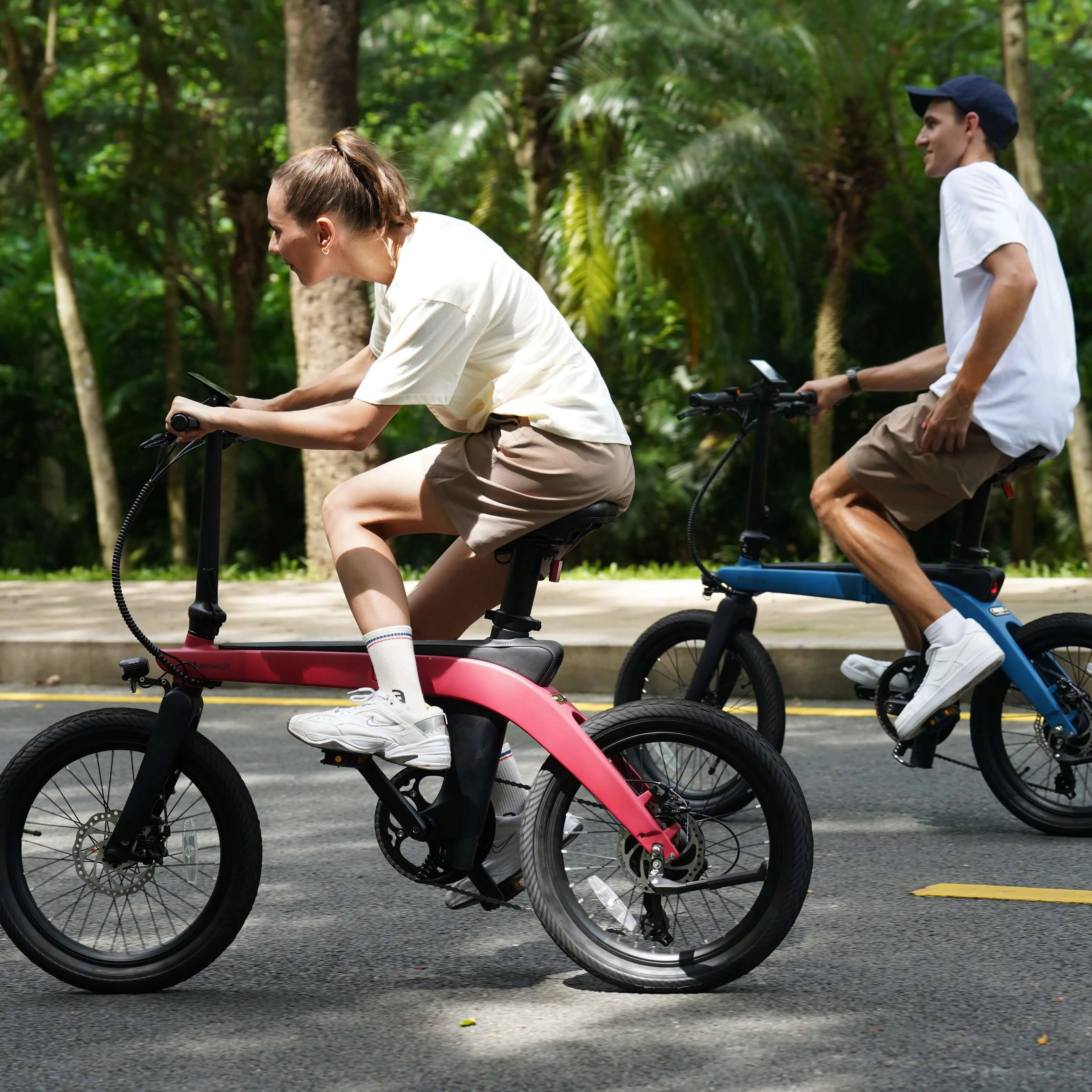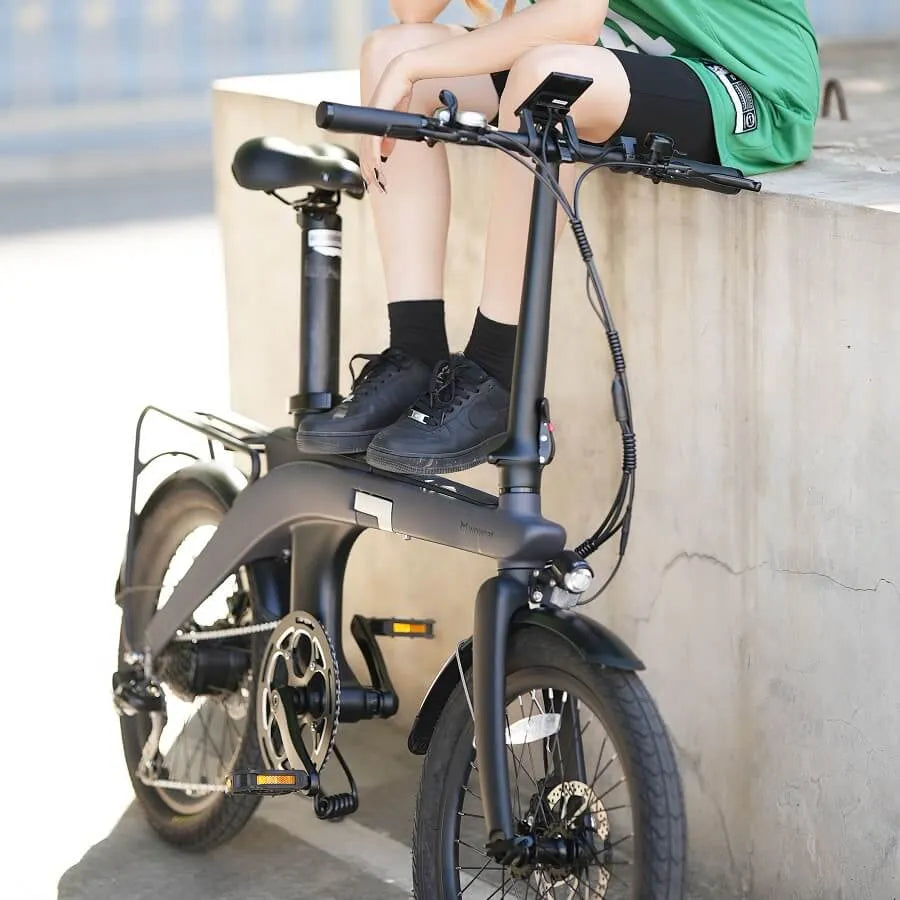In the world of two-wheeled transportation, the choice between an electric bike and a regular bicycle is no longer a simple decision between pedals and handlebars. The advent of electric bikes has introduced a new dimension to the age-old debate of how we navigate our daily journeys. As enthusiasts and commuters alike weigh the pros and cons of each, it becomes evident that these two wheeled companions offer distinct experiences. In this essay, we delve into the nuanced differences between electric bikes and traditional bicycles. Whether you're a seasoned cyclist or considering a switch to greener transportation, understanding these disparities is essential in making an informed decision on the road ahead.

What is an E-bike?
An electric bike, commonly known as an e-bike, is a bicycle equipped with an electric motor that assists the rider in propulsion. Unlike traditional bicycles that rely solely on human power, e-bikes integrate electric power to augment the rider's pedaling efforts. Here are key features and components of e-bikes:
Electric Motor:
The core component of an e-bike is the electric motor, which is typically located in the hub of one of the wheels (hub motor) or integrated into the bike's frame (mid-drive motor). The motor provides additional power to assist the rider.
Pedal Assist (Pedelec) or Throttle Control:
E-bikes usually come with pedal assist, also known as pedelec (pedal electric cycle), where the motor is activated when the rider pedals. Some e-bikes also feature a throttle control, allowing the rider to engage the motor without pedaling.
Battery:
To power the electric motor, e-bikes are equipped with rechargeable batteries. These batteries are typically lithium-ion and can be removed for charging or charged while still attached to the bike.
Controller:
The controller manages the interaction between the rider, the motor, and the battery. It regulates the level of assistance provided by the motor based on the rider's input and settings.
Display:
E-bikes often have an onboard display that provides information such as speed, distance traveled, and battery level. Some displays also allow riders to control the level of motor assistance.
Levels of Assist:
E-bikes typically offer multiple levels of assistance, allowing riders to choose how much electric assistance they want. Lower levels might provide a gentle boost, while higher levels deliver more power.
Design and Components:
E-bikes come in various designs, including traditional-looking bikes, mountain bikes, and commuter-style models. The addition of the electric components may result in a slightly heavier frame compared to traditional bicycles.
Regulations:
E-bikes are subject to regulations that vary by region. These regulations may include restrictions on motor power, maximum speed, and where e-bikes can be ridden. It's important for riders to be aware of and adhere to local e-bike regulations.
Range:
The range of an e-bike refers to the distance it can travel on a single battery charge. Factors such as terrain, rider weight, and the level of motor assistance can influence the overall range.
Environmental Considerations:
- bikes are often considered a more environmentally friendly alternative to motorized vehicles, as they produce zero emissions during operation and promote sustainable transportation.
E-bikes provide a versatile and efficient means of transportation, catering to a wide range of riders, from commuters seeking a faster and less strenuous ride to outdoor enthusiasts exploring challenging terrains. The integration of electric power opens up new possibilities for cycling, making it an accessible and enjoyable option for a broader demographic.

How do E-bikes work?
An electric bike (e-bike) works by combining human pedaling with electric motor assistance. The e-bike is equipped with a motor, usually located in the wheel hub or near the pedals, and a rechargeable battery mounted on the frame. As the rider pedals, sensors detect the motion and send signals to the controller, which activates the motor to provide additional power. This pedal assist system synchronizes the electric assistance with the rider's effort, making pedaling easier. Some e-bikes also feature a throttle, allowing direct control of the motor without pedaling. The onboard display provides information such as speed, distance, and battery level. Multiple levels of assistance cater to different riding conditions, and optional regenerative braking can recharge the battery during deceleration. In essence, e-bikes offer a seamless blend of human and electric power, providing an efficient, eco-friendly, and accessible mode of transportation.
How does an E-bike differ from a normal bike?
Riding Experience:
E-bike: E-bikes provide an assisted riding experience, where an electric motor augments the rider's pedaling efforts. This results in a smoother ride, especially on inclines or challenging terrains. Riders can cover longer distances with less physical exertion.
Normal Bike: Traditional bikes rely solely on human power. Riding a normal bike requires more physical effort, making it a great option for exercise and fitness. The experience is entirely dependent on the rider's strength and stamina.
Maintenance & Repairs:
E-bike: E-bikes typically have additional components, such as the electric motor, battery, and controller, which may require periodic maintenance. However, modern e-bikes are designed for durability, and routine maintenance is often comparable to that of traditional bikes.
Normal Bike: Traditional bikes are generally simpler in terms of components, leading to potentially lower maintenance costs. Basic maintenance includes tasks like chain lubrication, brake adjustments, and tire checks.
Speed:
E-bike: E-bikes can reach higher speeds than traditional bikes due to the electric motor assistance. The maximum speed is often regulated by local laws and can vary, but e-bikes can typically reach speeds between 20 to 28 mph (32 to 45 km/h) with motor assistance.
Normal Bike: Speed on a traditional bike is entirely dependent on the rider's pedaling ability. Average speeds for casual cycling typically range from 10 to 20 mph (16 to 32 km/h).
Rules & Regulations:
E-bike: Different regions have specific rules and regulations for e-bikes, including restrictions on motor power, maximum speed, and where e-bikes can be ridden. In some places, e-bikes may be subject to similar regulations as traditional bikes, while in others, they may have additional restrictions.
Normal Bike: Traditional bikes are subject to general traffic rules applicable to cyclists. They can be ridden on roads, bike lanes, and multi-use paths, following standard traffic laws. Rules for normal bikes are well-established and widely applicable.
In summary, the choice between an e-bike and a normal bike depends on individual preferences, riding goals, and local regulations. E-bikes offer a more effortless riding experience and can be advantageous for commuting longer distances or tackling challenging terrains. Traditional bikes provide a classic, fitness-oriented experience and may be preferred for those who enjoy the physical exertion of cycling. Consideration of maintenance, speed, and local rules will further guide the choice between these two types of bicycles.
Pros&Cons of E-bikes
Pros of E-bikes:
Assisted Riding: E-bikes provide electric motor assistance, making cycling easier, especially on hills or against strong winds. This feature encourages more people to take up cycling, including those who may find traditional biking physically challenging.
Extended Range: With the assistance of an electric motor, riders can cover longer distances without feeling fatigued. This makes e-bikes a practical choice for commuting and recreational rides.
Speed and Efficiency: E-bikes can achieve higher speeds than traditional bikes with less effort from the rider, enabling a faster commute and reducing travel time.
Eco-Friendly Transportation: E-bikes contribute to sustainable transportation by reducing reliance on motor vehicles, leading to lower carbon emissions and decreased traffic congestion.
Flexibility for Fitness: Riders can choose the level of motor assistance, allowing them to pedal with varying degrees of effort. This flexibility accommodates different fitness levels and encourages physical activity.
Reduced Sweat and Effort: E-bikes make cycling more accessible for those who want to commute without arriving at their destination sweaty. The motor assistance allows riders to maintain a more comfortable pace.
Adaptability to Terrain: E-bikes are versatile and well-suited for various terrains, making them suitable for both urban commuting and off-road adventures.
Cons of E-bikes:
Initial Cost: E-bikes can be more expensive than traditional bikes due to the added cost of the electric motor, battery, and associated components. However, prices are gradually decreasing as the technology becomes more widespread.
Weight: E-bikes are generally heavier than traditional bikes due to the additional components. This can make them less maneuverable and more challenging to transport, especially if the battery needs to be removed.
Maintenance Complexity: E-bikes have more components, including the electric motor and battery, which may require specialized maintenance. Repairs or replacements of these components can be more expensive compared to traditional bikes.
Limited Range on a Single Charge: Despite advancements in battery technology, e-bikes still have a limited range on a single charge. Riders need to plan their journeys to ensure they have sufficient battery power for the entire trip.
Dependency on Charging Infrastructure: E-bike users need access to charging infrastructure, which may be limited in certain areas. This can pose a challenge for long-distance rides or when traveling to locations without charging facilities.
Regulatory Variability: Regulations governing e-bikes vary widely by region, and staying informed about local laws is crucial. Some places may have restrictions on motor power, speed, or where e-bikes can be ridden.
Perceived Complexity: Some riders may find the additional features and controls on e-bikes intimidating or overly complex, especially if they are accustomed to the simplicity of traditional bikes.
While e-bikes offer numerous advantages, it's essential for potential users to consider their individual needs, budget, and the regulatory environment in their area before making a decision. The pros and cons should be weighed based on personal preferences and the intended use of the bicycle.
Which is Right for Me?
Choosing between a traditional bike and an e-bike depends on various factors, including your personal preferences, intended use, fitness level, and local conditions. Here are some considerations to help you determine which type of bike is right for you:
Choose a Traditional Bike If:
Fitness and Exercise are Priorities: If you enjoy physical exertion, want to build or maintain fitness, and value the experience of powering your ride entirely through pedaling, a traditional bike is an excellent choice.
Budget is a Significant Factor: Traditional bikes are generally more budget-friendly upfront, and they often have lower maintenance costs. If cost is a critical consideration, a traditional bike might be the more economical option.
Simplicity and Lightness Matter: Traditional bikes are simpler in design and lighter in weight compared to e-bikes. If you prioritize a straightforward, low-maintenance bike that is easy to handle and transport, a traditional bike may be more suitable.
Local Regulations Favor Traditional Bikes: If the area where you ride has strict regulations or restrictions on e-bike usage, or if you prefer adhering to traditional biking norms, a standard bike is a straightforward choice.
You Enjoy a Challenge: If you appreciate the physical challenge of cycling, whether it's conquering steep hills or covering long distances under your own power, a traditional bike offers a more demanding ride.
Choose an E-bike If:
Assisted Riding is Preferred: If you want the flexibility of receiving electric assistance, especially for uphill climbs, long distances, or a sweat-free commute, an e-bike can make cycling more accessible and enjoyable.
Commuting or Long-Distance Travel: If you plan to use the bike for daily commuting or longer rides and want to arrive at your destination without being overly fatigued, the motorized assistance of an e-bike can be a game-changer.
Joint or Mobility Issues: If you have joint pain, limited mobility, or other physical conditions that may affect your ability to pedal for extended periods, an e-bike can provide a comfortable and supportive option.
Speed and Efficiency Are Priorities: If you need to cover distances quickly or want to maintain a higher average speed with less physical effort, the speed and efficiency of an e-bike may align better with your needs.
Environmental Consciousness: If you're looking for an eco-friendly mode of transportation that reduces your carbon footprint, an e-bike is a sustainable alternative to traditional commuting methods.
Adaptability to Varied Terrain: If you plan to ride in diverse terrains, such as hills, trails, and urban environments, the added power of an e-bike can enhance your adaptability and overall riding experience.
Ultimately, the right choice depends on your specific lifestyle, preferences, and how you envision using the bike. If possible, test ride both types to get a feel for the experience and determine which aligns best with your individual needs and goals.











